Acrobatics for Children & Teenagers
This book has been very carefully prepared, but no responsibility is taken for the correctness of the information it contains. Neither the author nor the publisher can assume liability for any damages or injuries resulting from information contained in this book.
Acrobatics for Children & Teenagers
By Michael Blume
Meyer & Meyer Sport
Original Title: Akrobatik mit Kindern und Jugendlichen
Aachen: Meyer & Meyer 2006
Translated by: AAA Translations
British Library Cataloguing in Publication Data
A catalogue record for this book is available from the British Library
Acrobatics for Children & Teenagers
Maidenhead: Meyer & Meyer Sport (UK) Ltd., 2013
ISBN: 9781782550136
All rights reserved, especially the right to copy and distribute, including the translation rights. No part of this work may be reproducedincluding by photocopy, microfilm or any other means processed, stored electronically, copied or distributed in any form whatsoever without the written permission of the publisher.
2013 by Meyer & Meyer Sport (UK) Ltd.
Aachen, Auckland, Beirut, Budapest, Cairo, Cape Town, Dubai, Hgendorf,
Indianapolis, Maidenhead, Singapore, Sydney, Tehran, Wien
 Member of the World Sport Publishers Association (WSPA)
Member of the World Sport Publishers Association (WSPA)
www.w-s-p-a.org
Printed by: B.O.S.S Druck und Medien GmbH, Germany
ISBN: 9781782550136
eISBN: 9781782553502
E-Mail:
www.m-m-sports.com
Content

PREFACE
At a time of growing individualization and increasing physical inactivity, there is a valid place for partner acrobatics in the education of children and teenagers. Accepting and wanting the other person as a partner, building viable relationships and the ability to put aside ones own interests for the greater good in my opinion are essential and contemporary skills that can be practiced superbly through acrobatics.
The skills that are acquired through the mutual quest for balance and physical interaction with each other are closely linked to a change of attitude and awareness toward the other person and positively affect ones self-image. Therefore acrobatics also has an absolutely valid place in the social education of children and teenagers.
The photo material in this book shows the different aspects of working with children and teenagers:
Acrobatics as a recreational activity without any major material and spatial requirements,
Acrobatics as part of a social education project for the integration of children and teenagers affected by social burdens, and
Acrobatics as a school and club sport.
Have fun with theory and practice
Michael Blume
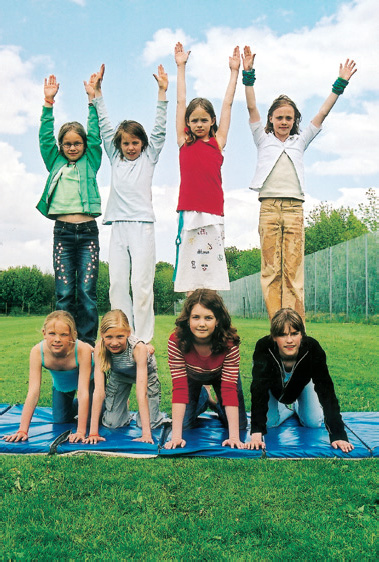
INTRODUCTION
Children and teenagers find acrobatics fascinating. Acrobatics is circus performance. When acrobats perform their tricks in the circus ring the children are totally captivated. Their eyes are aglow, their cheeks are flushed, and they watch with baited breath; they succumb to the mysterious magic of the circus. Going from watching the circus to being the circus is only a small step for children, and acrobatics is a major part of that. Many children and teenagers have lots of fun learning agility skills and working on their balance.
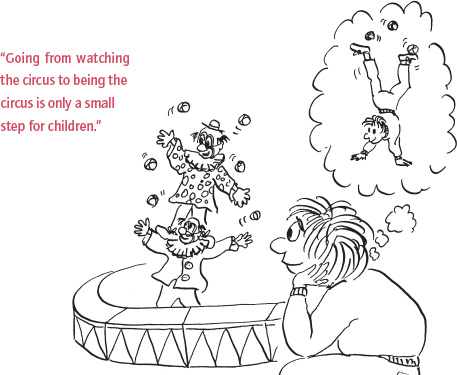
A great many spectacular-looking pyramids and partner balance skills can be learned quickly and significant progress can be made in a relatively short period of time. A sense of achievement motivates and inspires. Everyone can participate, whether chubby or skinny, big or small; everyone matters and finds a suitable place within the human structures.
Acrobatics is an adventure. Building acrobatic formations requires confidence a willingness to climb up on others at the risk of falling. Other bodies are balanced in unusual positions, which can easily result in a loss of balance. Having to rely on the skill and abilities of others is both thrilling and unsettling. Mishaps and successes live side by side. Human works of art only happen if everyone works together.
Acrobatics is the art of movement. Imaginative human structures can be created with simple means. Creativity is only limited by the biomechanical laws of the human body. Children are especially productive when they search for motion sequences independently and are able to design them together.
Acrobatics is a sport. One learns to be in control of ones body and to work on ones balance. Important qualities like strength, agility, body tension, and spatial orientation are developed in a playful manner and practiced by working together.
In this book, I would like to introduce the principles of working with children and teenagers on elements of partner acrobatics. What I mean by partner acrobatics includes simple formations for two people as well as human pyramids of up to twelve or more participants that will be balanced on the floor without the use of aids.
When teaching these formations at school or at a club, there are some important things to remember because special situations do occur. Children and teenagers must learn to physically work with each other because without physical contact no works of art are created. In doing so, important experiences are created, which I have attempted to define under the phrase Acrobatics Experience. What are the contexts in which getting involved is involved and in which life situations may get in the way?
When creating acrobatic formations, especially human pyramids, physical stresses may occur that can cause potentially permanent harm to a childs or adolescents body if executed incorrectly. During instruction, it is therefore imperative to consider the important biomechanical principles that will be outlined in a separate chapter of this book.
Much depends on the beginning and how the children and teenagers are prepared for the special demands in order to generate enthusiasm and joy in the art of movement. The various ways of structuring practice sessions in a meaningful way will be described, as well as different options for presentation and the design of performances.
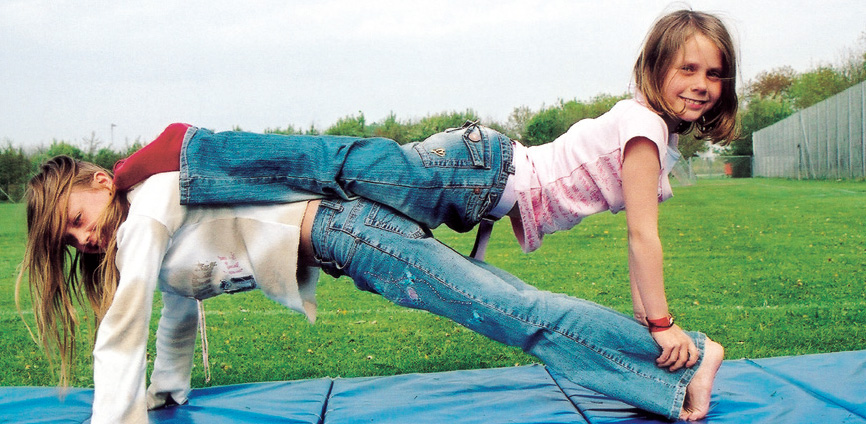
The practical section will include many preparatory exercises as well as simple acrobatic formations from the various areas of partner acrobatics that have been tried and tested. The individual chapters offer detailed written and visual descriptions of the many techniques and types of movements, from building human pyramids to fantasy formations, and from dynamic elements to elegant partner formations.
Resources for the training process are thus made available to anyone interested in acrobatics so that many more children and teenagers may experience the fascination of this art of movement.
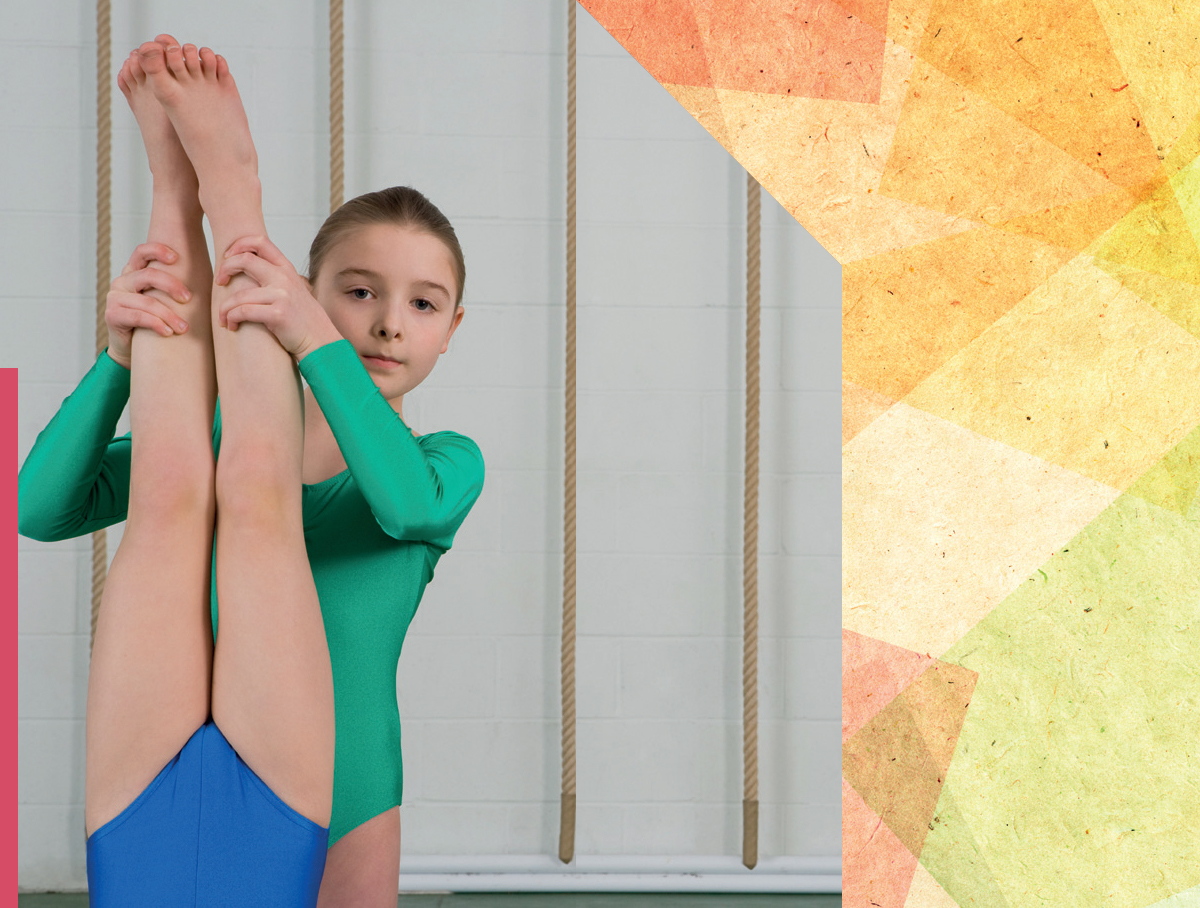
CHAPTER 1
THE ACROBATICS EXPERIENCE
THE ACROBATICS EXPERIENCE
What makes acrobatics so special isnt only the unusual movements or the creation of human pieces of art. Acrobatics has its own sphere of experience that is created by working with each other. There are no stationary, rigid apparatuses. They are replaced by human beings who act in direct interdependence and who must rely upon each other for the success of each routine. This routine requires that partners work closely with each other, and it makes acrobatics a valuable educational tool.
Next page
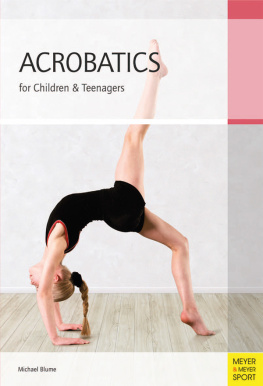




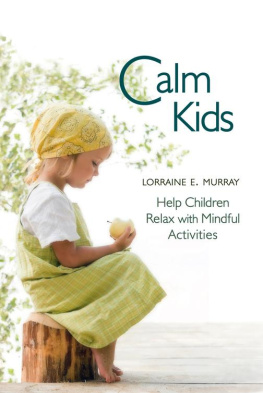

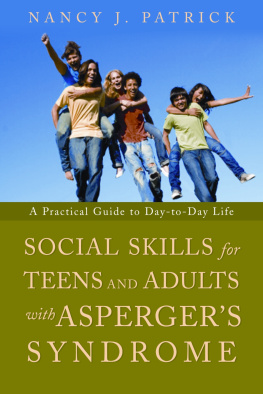


 Member of the World Sport Publishers Association (WSPA)
Member of the World Sport Publishers Association (WSPA)



